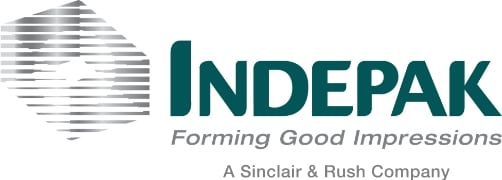At Indepak, our thermoforming equipment is capable of processing a wide range of materials. If you are searching for a cost-effective, sustainable thermoform packaging, one material you might consider is high-density polyethylene, or HDPE. Here are a few helpful facts about HDPE and why it might be a good fit for your packaging needs.
1. HDPE Can Be Recycled
Many of our clients ask about sustainability as soon as we sit down and discuss a packaging project. We have many sustainable options, and this includes providing our clients with thermoform packaging materials that can be recycled. Most of the materials we use are recyclable and HDPE is no exception.
2. HDPE Is Easy To Recycle
Not only is HDPE recyclable, of all the many thermoform plastics available for packaging, HDPE is one of the easiest to recycle. Each plastic is designated with a special resin identification code, and HDPE’s code is the number two. You can find this code on plastic bottles and packages surrounded by a triangle. Virtually all curbside recycling programs in the United States accept HDPE, making it easy for consumers to recycle by simply tossing a used HDPE package into their recycling bin. While most thermoform plastics can be recycled, HDPE and polyethylene terephthalate (PET) are the two materials that are nearly always accepted at recycling centers.
3. HDPE Is Durable & Lightweight
One of the reasons why many of our customers select HDPE is the durability factor. HDPE is extremely impact-resistant, protecting your product if it is jostled around during transport or dropped off a shelf. For instance, HDPE is often used to make pipes because it is more durable than PVC and much lighter than concrete or metal pipes. Additionally, HDPE is moisture resistant and stain resistant, which also protects your products.
While HDPE is highly durable, it’s also very lightweight, which helps reduce your shipping and transportation costs. We can design HDPE packaging that fits around your product exactly with little extra material. This allows you to pack more units into each shipping box or container, further reduces your transportation and handling costs.
4. HDPE Can Be Used For Many Products
In addition to thermoform packaging and products such as food storage containers and plastic bottles, HDPE is used to create many other products. Plastic furniture and 3-D printer filament are two examples, and borated HDPE can be used in nuclear power plants, on nuclear submarines and in cancer treatment centers as it blocks harmful radiation. While your product probably doesn’t need thermoform packaging that can withstand nuclear radiation, this simply exemplifies the durability and chemical-resistance of HDPE. HDPE also has been approved by the FDA for direct-contact use with food products and beverages. For instance, plastic milk bottles often are crafted out of HDPE, as well as bottle caps for soda, water and other beverages.
While HDPE can be a good choice for some types of thermoform packaging, we also use many other materials, including PET, PETG, PVC, ABS and even starch-based bioplastics. Our team of designers will study your product carefully and determine which type of plastic best suits your needs and budget. If you are in the market for any type of thermoform packaging, contact us today and we will get started designing a custom packaging solution just for you.





